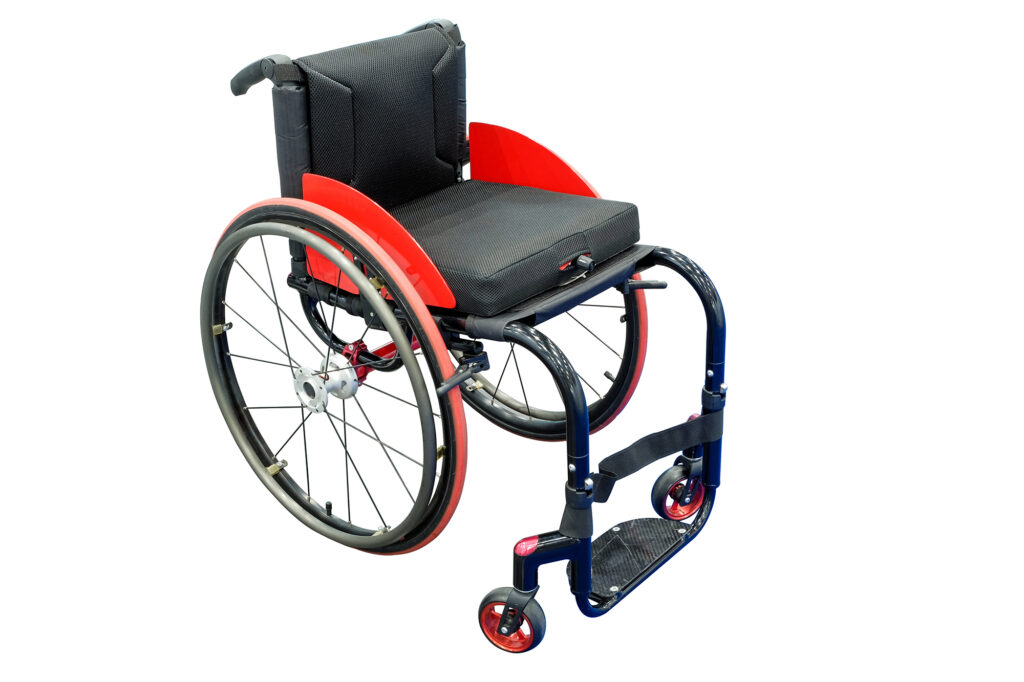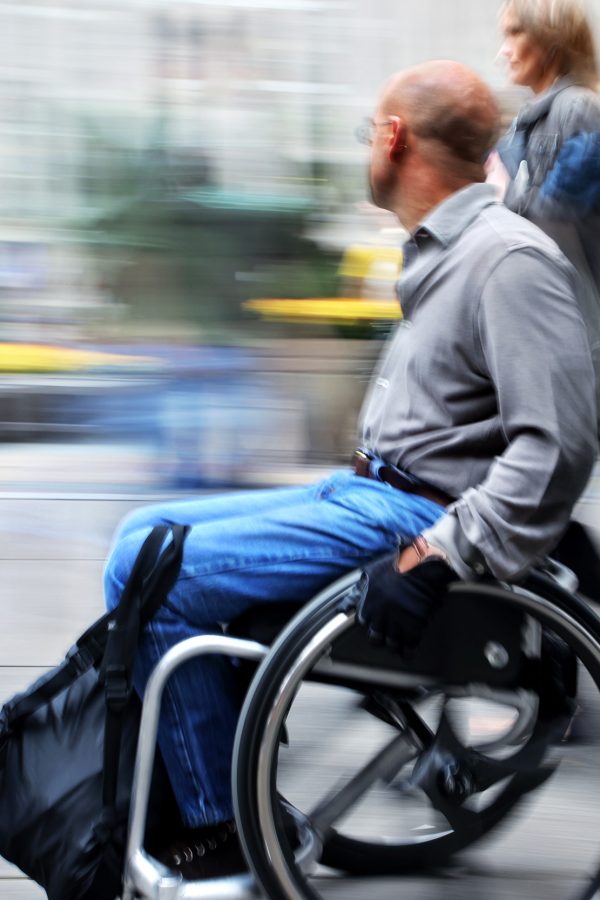
Wheelchair Cushion Defects & Injuries
Defective wheelchair cushions can indeed cause injuries to wheelchair users, primarily due to the loss of support, pressure relief, and stability they are designed to provide. When these cushions fail, it can lead to various complications such as pressure sores, discomfort, instability, falls and accidents resulting in injuries in many types of serious injuries.
Causes of Injuries Due to Defective Wheelchair Cushions
A. Loss of Support: Wheelchair cushions are crucial for distributing pressure evenly, preventing pressure sores.
Loss of support in wheelchair cushions can occur due to various factors, ranging from material degradation to manufacturing defects. When cushions fail to provide adequate support, wheelchair users are at risk of developing pressure sores (bed sores), discomfort, and instability. Understanding the causes of support loss and implementing preventive measures is crucial for manufacturers to ensure the safety and effectiveness of their products.
Causes of Loss of Support of Wheelchair Cushion:
1.Material Degradation: Over time, foam and gel cushions can lose their resilience and supportive properties due to factors such as compression, moisture absorption, and exposure to environmental elements like heat and sunlight. This degradation can result in the cushion no longer adequately distributing pressure, leading to discomfort and increased risk of pressure sores.
FDA REPORT:
In a recent case reported to the FDA, the cushion user developed serious pressure sores later requiring staging of the pressure sore (bed sore) and hyperbaric oxygen treatment to treat the sores and restore blood flow. The cushion in question was a Jay J2DC Cushion manufactured by Sunrise Medical, LLC. The manufacturer did not assume liability for the cushions developing air bubbles only after a short time, but instead cited numerous parts of the owner’s manual that accompanied the cushion as reasons the user was at fault instead.
2. Compression Set: Prolonged compression of foam or gel cushions can cause them to develop a permanent indentation or “compression set,” where the material fails to regain its original shape and supportiveness. This phenomenon commonly occurs in areas where the user’s weight is concentrated, leading to uneven support distribution and potential discomfort.
3. Manufacturing Defects: Flaws in the manufacturing process, such as uneven distribution of materials, inadequate bonding, or improper curing, can compromise the structural integrity of wheelchair cushions. These defects may not be immediately apparent but can contribute to premature support loss and early cushion failure.
4. Material Selection: Choosing high-quality materials resistant to compression, moisture, and environmental factors is essential for ensuring the longevity and supportiveness of wheelchair cushions. Manufacturers should prioritize materials with proven durability and supportive properties, conducting thorough testing to assess their performance over time.
5. Enhanced Durability: Incorporating design features such as reinforced seams, high-density foam cores, and durable cover materials can help improve the durability and resilience of wheelchair cushions. By reinforcing critical areas prone to wear and tear, manufacturers can minimize the risk of support loss and prolong the cushion’s lifespan.
B. Lack of Pressure Relief: Inadequate pressure relief can cause discomfort and potential tissue damage, especially for users who spend prolonged periods in their wheelchairs. Defective cushions may fail to provide the necessary relief, leading to pain and injuries.
Lack of pressure relief in wheelchair cushions occurs when the cushion fails to adequately distribute pressure, leading to discomfort and increased risk of tissue damage, particularly in areas prone to pressure sores. Several factors contribute to this issue:
1. Inadequate Material Properties: If the cushion material lacks sufficient resilience or is too firm, it may not effectively conform to the user’s body contours, resulting in localized pressure points and reduced pressure relief. Materials with poor pressure redistribution properties can exacerbate existing discomfort and increase the risk of pressure sores.
2. Compression and Material Deterioration: Continuous compression of the cushion, combined with material degradation over time, can diminish its ability to provide effective pressure relief. As the cushion loses its supportive qualities, it becomes less capable of evenly distributing pressure, leading to discomfort and potential tissue damage.
3. Improper Cushion Design: Design flaws such as inadequate contouring, insufficient thickness, or improper weight distribution can compromise the cushion’s ability to provide adequate pressure relief. Cushions that are not properly designed to accommodate the user’s specific needs and anatomical characteristics may fail to alleviate pressure effectively.
C. Instability: Cushions that lose their shape or structure can compromise the stability of the wheelchair, increasing the risk of falls and injuries to the user.
Instability in wheelchair cushions arises when the cushion fails to maintain the user’s stability and position within the wheelchair. This can result from cushion deformation, loss of support, or inadequate design. To prevent early failures related to instability, manufacturers can reinforce cushion structures, use durable materials, and ensure proper contouring to the user’s body shape.
Additionally, incorporating features like non-slip surfaces and attachment mechanisms can enhance stability and prevent shifting during use. Regular quality control checks and user feedback integration can help identify and address potential instability issues early in the manufacturing process.
D. Material Failure: Foam and gel cushions can degrade over time due to factors such as wear and tear, exposure to moisture, or manufacturing defects. When these materials fail, they can no longer provide the required support and pressure distribution, putting users at risk.
Material failure in foam and gel cushions refers to the degradation or breakdown of cushion materials, leading to loss of support, pressure relief, and stability. This can occur due to various factors such as compression, moisture absorption, exposure to heat and sunlight, and manufacturing defects. Foam cushions may develop compression set, where they lose their original shape and resilience, while gel cushions may leak or lose their viscosity over time.
To prevent early failures, manufacturers can use high-quality materials resistant to compression and environmental factors, implement rigorous quality control measures to detect and address manufacturing defects, and design cushions with reinforced seams and durable cover materials. Additionally, educating users on proper cushion maintenance and replacement can help prolong the lifespan of foam and gel cushions and prevent material failure.
Fault and Liability for Injuries Caused by Defective Wheelchair Cushions
Manufacturer: If the cushion fails due to a manufacturing defect or inadequate quality control measures, the manufacturer could be held liable for any resulting injuries.
Retailer/Distributor: The retailer or distributor may share liability if they knowingly sold or distributed defective products or failed to warn consumers about potential risks associated with the cushions.
Healthcare Provider: In cases where a healthcare provider recommended or supplied the defective cushion, they could be held accountable for negligence if they failed to assess the product’s suitability or warn the user about potential risks.

Reasons for Failure of Foam and Gel Cushions
Material Degradation
Foam and gel cushions can degrade over time, losing their supportive properties due to factors like compression, moisture absorption, or exposure to heat and sunlight.
Manufacturing Defects
Flaws in the manufacturing process, such as uneven distribution of materials or inadequate bonding, can lead to premature cushion failure.
Inadequate Design
Poor design choices, such as using substandard materials or insufficient reinforcement, can cause cushions to break down more quickly or fail to provide adequate support from the outset.
Improper Maintenance
Neglecting proper care and maintenance, such as failure to clean or inspect the cushion regularly, can accelerate wear and tear and contribute to premature failure.
In conclusion, defective wheelchair cushions can pose serious risks to users, leading to injuries and complications such as pressure sores, discomfort, and instability. Fault in such cases may lie with the manufacturer, retailer, healthcare provider, or even the user, depending on the circumstances. Understanding the reasons for cushion failure, implementing preventive measures, and holding accountable parties responsible can help mitigate these risks and ensure the safety and well-being of wheelchair users.
Legal Actions for Injuries Caused by Defective Wheelchair Cushions
If you or a loved one has been injured due to a fall or developed pressure sores and medical complications from a defective cushion, then call and talk with a lawyer to discuss your legal rights.
Understanding the underlying causes of these wheelchair cushions failures and the associated liability and negligence on the manufacturers is essential at representing clients with serious injuries and to recover damages for your losses and injuries.